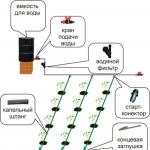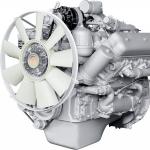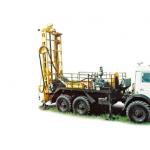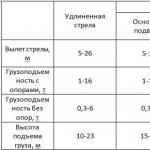Any apartment or house should be equipped with metering devices for the consumption of various resources that cost money. It is allowed not to install heat and water meters, or you can put them later. But electric meters must be mandatory.
Electric energy consumption meters are the main device that takes into account its consumption. According to the readings of this meter, payment for electricity is charged. Therefore, you need to know which type of appliance is best for your home or apartment. Energy companies are constantly trying by all means to impose on us the installation of new energy meters.
Old electricity meters of class 2.5 are not able to take into account the consumption of electricity of minimum power, for example, electronic devices switched on in standby mode. The latest models of meters have an accuracy class from 0.5 to 2. Let's see what types of energy meters exist and which device is suitable for your home or other object that consumes electricity.
Types of electricity meters
Electric meters are divided into the following types:
- Induction.
- Electronic.
Induction electricity meters
An induction type electric meter works on the principle of a magnetic field formed by two coils: voltage and current. The magnetic field acts on the disc and causes it to rotate. The disk, in turn, drives the counting mechanism. With an increase in voltage and current in the network, the disk will rotate faster and wind up the energy consumption readings.
The accuracy of such devices leaves much to be desired, and is equal to 2.5. But such counters are considered one of the most reliable, not without reason they have a warranty period of 15 years.
Electronic electricity meters
This type of device acts directly by measuring the current and voltage in the network. It has no intermediate links and mechanisms, therefore there is no loss of accuracy either. The parameters are displayed and stored in the meter memory in digital form.
We list the advantages of electronic meters:
- Compact dimensions.
- The function of accounting for several tariffs.
- The possibility of additional installation of a microcircuit to increase the accuracy class.
- Accurate and fast determination of readings, as the device is equipped with a digital display.
- It is very difficult to deceive such a counter, because of the possibility of self-correction of readings.
- The standard common interface allows the meters to be used in automatic accounting and control systems.
From shortcomings It should be noted the lack of reliability in comparison with induction type meters, as well as the increased cost.
Single-tariff and multi-tariff
Electricity meter at one rate does not have any features, since it works only for one type of accounting.

More details can be considered two-tariff electricity meters . Today, many people want to save electricity in order to pay as little as possible for it. This is due to the production of high-power household appliances. For a month of using such equipment, an impressive amount of money is wound up. If you install a meter for two tariffs, you can save some money.
Principle of operation
The action of the meter is that the cost of electricity at different times of the day is different.

This is of interest to power plants that produce electricity. In the morning and in the evening, the load on the power plant increases, as consumers use electricity more at this time. As a result, the power plant is forced to work unevenly. This affects equipment wear, fuel consumption, etc. Therefore, two-tariff meters were introduced.
During the day, they work in such a way that at different times of the day the cost of electricity varies. This gives a certain incentive to consumers to use household appliances at a time when it is more profitable for them.
Advantages
- Saving money. The device pays for itself in 1 year.
- Helping power plants reduce maintenance and save fuel.
- Reduction of harmful emissions, air pollution.
Usually the last two points do not play a role for the consumer, so one main advantage remains - saving money.
Flaws
- Not for all regions, the cost of electricity in the evening and during the day is beneficial for the average consumer.
- After installing a meter with two metering rates, you need to be able to properly use household appliances, otherwise the savings will be zero.
Single-phase and three-phase
One of the types of meter is installed, depending on the type of power supply in the house.
Accuracy class
This property of the device determines the percentage error during energy accounting. Today, according to the rules, it is necessary to use meters with an accuracy class of at least 2.

Power
This is one of the important features. It must be taken into account when choosing a device, based on the calculation of power consumption per day from consumers, that is, what is the total current load in your apartment. On sale there are counters for a current load of 5-100 amperes.

Attachment Method
Modern electric meters are fixed on a DIN rail or on bolts.

Terms of Use
There are electric meters that can only be used in warm, heated rooms, but there are also street versions of device models. You must choose for what conditions the device is best suited.

Which counter to choose
First, consider the power characteristics of the meter. To make the right choice in terms of power, or it would be more correct to say, in terms of current strength, you need to calculate what devices you will work with at home. Usually, the instructions for household appliances indicate the power in kilowatts.
Add up all the power of the devices, make a small margin in case you purchase additional household appliances. If the total power turned out to be no higher than 10 kilowatts, then purchase a 60 ampere model. If the power per day is more than 10 kilowatts, then you need to buy a meter for 100 amperes.
Secondly, decide for yourself whether the electronic device is either mechanical, 1-tariff, or 2-tariff. This is up to you to decide for yourself, as everyone has different financial capabilities and preferences. If you have difficulties with the choice, it is better to contact the experts.
Thirdly, you need to choose a device according to the type of attachment. DIN rail mounting is recommended as it is a universal mounting.
- For a garage, it is better to choose a more powerful device, since it is possible to connect a powerful power tool, and several of them at once.
- When buying a meter, pay attention to the verification date, which is usually indicated in the passport, as well as the body seal. The verification date must be less than 2 years for 1-phase version, and less than 1 year for 3-phase version.
- You may be offered to purchase a meter with an automatic metering system, paying more money for it. This function will not give you any benefit, since it facilitates the control of readings only for the power supply. For you, this will turn out to be an overpayment of money.
- Domestic manufacturers produce electricity meters with good quality, no worse than imported models. Read in detail the models of electric meters, reviews about them on various forums, choose the cheapest sample, but not inferior in reliability.
- We must not forget about the possible repair of the product. You need to find information about the maintainability of the device you have chosen, about its cost and maintenance.
- An important point is the choice of a metering device according to its noise level, since after installation, various devices can create unpleasant sounds and noises.
- Induction type electric meters have a short period between calibrations, so it is better to purchase a device with electronic filling, which has the longest calibration period. This will save you the financial costs of paying for the mandatory procedure for checking the electric meter.
- Many craftsmen have learned to rewind counters with a mechanical counting device, and this violates the law. However, in Russia such “savings” of money by defrauding companies that provide electricity to the population still continue to enjoy some popularity.
- If you nevertheless made the choice of an electric meter with a mechanical design of the counting mechanism, then be sure to check it before purchasing. This verification procedure is carried out as follows: scroll the disk slightly by hand, if the disk continues to rotate by inertia, this indicates that the mechanism is in good condition and that it is ready for use. If the disk sticks, or does not rotate freely by inertia, then this is considered a malfunction. It is better to refuse such a purchase.
1. According to the principle of action:
- induction
- electronic (static)
2.By accuracy class counters:
- workers
- exemplary
The accuracy class of a meter is its largest allowable relative error, expressed as a percentage.
In accordance with GOST R 52320-2005, GOST R 52321-2005, GOST R 52322-2005, GOST R 52323-2005, active energy meters must be manufactured with accuracy classes of 0.2S; 0.2; 0.5S; 0.5; 1.0; 2.0 reactive energy meters - accuracy classes 0.5; 1.0; 2.0 (GOST R 5242520-05).
3.For connection to electrical networks:
- single-phase (1f 2Pr single-phase two-wire)
- three-phase - three-wire (3ph 3Pr three-phase three-wire)
- three-phase - four-wire (3ph 4Pr three-phase four-wire)

4. By the number of measuring elements:
- single-element (for single-phase networks (1f 2Pr))
- two-element (for 3-phase networks with uniform load (3f 3Pr))
- three-element (for three-phase networks (3f 4Pr))
5. According to the principle of inclusion in electrical circuits:
- direct connection of the counter
- transformer inclusion of the counter:
- connection of the meter to a three-phase 4-wire network using three voltage transformers and three current transformers
- connecting the meter to a three-phase 3-wire network using three voltage transformers and two current transformers
- connection of the meter to a three-phase 3-wire network using two voltage transformers and two current transformers
6. By design:
- simple
- multifunctional
7. By the number of tariffs:
- one-tariff
- multi-tariff
8. By types of measured energy and power:
- active electricity (power)
- reactive electricity (power)
- active-reactive electricity (power)
Active power for a 1-phase meter, W: PA1f2 = UfICosφ
Active power for a 3-phase two-element meter connected to a 3-wire network, W:
Active power for a 3-phase three-element meter connected to a 4-wire network, W:
Counter types:
- a meter in which the currents flowing in the fixed coils interact with the currents induced in the moving element, which sets it in motion, in which the number of revolutions is proportional to the measured energy.

For example:
Single-phase electric meter SO-505, accuracy class 2.0. Single-phase electric meter SO-1, accuracy class 2.5.
Three-phase electric meter SA3U-I670, accuracy class 2.0. Electric meter SR4U-I673, accuracy class 2.0.
- a counter in which current and voltage act on solid-state (electronic) elements to create pulses at the output, the number of which is proportional to the measured energy.

For example, a single-phase electric meter Mercury 201 or Mercury 200.02, accuracy class - 2.0. Or a three-phase electric meter Mercury 230A, accuracy class 1.0. Three-phase electric meter ALPHA A1R, accuracy class 0.5S.
- an electric energy meter equipped with a set of counting mechanisms, each of which operates at set time intervals corresponding to different tariffs.

- a meter designed to transmit the size of a unit of electrical energy, specially designed and used to obtain the highest accuracy and stability under controlled conditions.

Basic concepts, terms and definitions
counting mechanism(reading device): The part of a meter that makes it possible to determine the measured value of a quantity.
A reading device may be a mechanical, electromechanical, or electronic device containing both a memory and a display that stores or displays information.
measuring element- part of the meter that creates output signals proportional to the measured energy.
Current circuit: The internal connections of the meter and the part of the measuring element through which the current of the circuit to which the meter is connected flows.
Voltage circuit: The internal connections of the meter, part of the measuring element and, in the case of static meters, part of the power supply, fed by the voltage of the circuit to which the meter is connected.
Direct connection electricity meter(or direct connection): As a rule, a 3-phase electricity meter, connected to a 4-wire network, with a voltage of 380/220V, without the use of measuring current and voltage transformers.
transformer meter- a meter designed to be switched on through measuring voltage transformers (VT) and current (CT) with predetermined transformation ratios.
The meter reading must correspond to the value of the energy that has passed through the primary circuit of the measuring transformers.
Basic concepts of electricity metering
Commercial electricity metering– electricity metering for cash settlement for it
Technical metering of electricity– accounting for control of electricity consumption within power plants, substations, enterprises, for calculation and analysis of electricity losses in electrical networks, as well as for accounting for electricity consumption for production needs.

Counters installed for settlement accounting are called settlement meters.
Counters installed for technical accounting are called technical accounting meters.
Meters that take into account active electricity are called active energy meters.
Meters that take into account reactive electricity for the accounting period are called reactive energy meters.
measuring instrument- a technical device intended for measurements.
Measuring complex of electricity metering devices- a set of devices of one connection intended for measuring and accounting for electricity: current transformers, voltage transformers, electricity meters, communication lines.
Starting current(sensitivity) - the lowest current value at which continuous recording of readings begins
Base current- the value of the current, which is the starting point for establishing requirements for a meter with direct connection
Rated current- the value of the current, which is the starting point for establishing requirements for a meter powered by a transformer
Maximum current- the highest current value at which the meter meets the accuracy requirements established in the GOST R 52320-2005 standard.
Rated voltage- the value of the voltage, which is the initial when setting the requirements for the meter.
Technical requirements for electricity meters
General requirements:
- Accuracy class not worse than 0.5S
- Compliance with the requirements of GOST R (52320-2005, 52323-2005, 52425-2005)
- Type approval certificate
Functional requirements:
- Measurement and accounting of active and reactive electricity (continuous cumulative total), power in one or two directions (interval 30-minute increments of electricity)
- Storage of measurement results (load profiles - at least 35 days) and information about the state of measuring instruments
- The presence of a non-volatile clock that provides date and time keeping (accuracy of no worse than ± 5.0 seconds per day with external synchronization operating as part of SOEV)
- Maintaining Automatic Time Correction
- Conducting automatic self-diagnosis with the formation of a generalized signal in the "Event Log"
- Protection against unauthorized access to information and software
- Providing access to the measured values of the parameters and the "Event Logs" from the side of the USPD or IVK TsSOD

The Event Log should record the time and date of the following events:
- unauthorized access attempts
- facts of communication with the counter that led to any data changes
- changing the current time and date when synchronizing time
- deviation of current and voltage in measuring circuits from specified limits
- lack of voltage in the presence of current in the measuring circuits
- power breaks
- The meter must ensure operability in the temperature range, certain operating conditions. (-40.. +550C)
— Mean time between failures is not less than 35,000 hours
– Calibration interval – at least 8 years
You may be interested in:
The question of how to choose an electric meter for an ignorant person can cause difficulties, and dishonest sellers, often taking advantage of ignorance, offer expensive items that are not needed.
Or vice versa, they can sell an old model that the energy supply company will not accept. How to avoid mistakes and what you should pay attention to when choosing a metering device is discussed in detail in the article below.
Types of electricity meters
First of all, we will determine which counters are produced today and how they differ from each other.
- ⚡ mechanical or induction
- ⚡ electronic
 Mechanical ones have been and are in many apartments since the days of the Soviet Union. These are well-known disk counters.
Mechanical ones have been and are in many apartments since the days of the Soviet Union. These are well-known disk counters.
Their main advantages:
- ⚡ durability. Can easily work for 15 years or more. At the same time, transferring all kinds of emergency modes (high voltage, short circuit currents).
- ⚡ low cost
- ⚡ high reliability
At the same time, they have one significant drawback - a large error. Moreover, she can play both in your direction (the counter does not wind up), and against you (the counter has a large self-propelled). For example, after a short circuit, inter-turn damage can occur in the coil. You will not even know about it, and the meter will wind up extra kilowatts for you with each revolution. In addition, they are not designed for installation in unheated rooms and outdoors.
Electronic devices have a lot of advantages:
- ⚡ various functions - the meter shows current, voltage, time, frequency, etc.
- ⚡ multi-tariff
- ⚡ compactness
- ⚡ low accounting error
- ⚡ wide range of operation at negative temperatures
The disadvantage is the higher price and shorter life. If your network is not properly protected from power surges and short circuits, the failure of such a device is a matter of time.
Another inconvenience for electronic (not to be confused with mechanical) meters is that it is impossible to take readings on an electronic scoreboard when there is no voltage. How to choose an electric meter from these options depends on your preferences. What is more important for you functionality and accuracy or price.
Multi-tariff metering devices and single-tariff
 If you are going to buy a multi-tariff meter, then this will definitely be an electronic meter. The selection criteria in this case are the type of your load in the apartment and the hours of its use. If you belong to the “owls” and not to the “larks” or you have powerful electric heaters that turn on at night, then your choice will be multi-tariff. The higher price of the counter will be beaten off many times in the future.
If you are going to buy a multi-tariff meter, then this will definitely be an electronic meter. The selection criteria in this case are the type of your load in the apartment and the hours of its use. If you belong to the “owls” and not to the “larks” or you have powerful electric heaters that turn on at night, then your choice will be multi-tariff. The higher price of the counter will be beaten off many times in the future.
3-phase and 1-phase electric meters
 Here the choice depends on the power cable. If three phases enter the house, and a 4-core cable, then purchase a 3-phase device. If the house has only a phase and zero - single-phase. When you change the counter from one to another, then just look at the scoreboard of the old one. When the inscription 220-230V is on it, this is single-phase accounting, if there are numbers 380-400V, it is three-phase.
Here the choice depends on the power cable. If three phases enter the house, and a 4-core cable, then purchase a 3-phase device. If the house has only a phase and zero - single-phase. When you change the counter from one to another, then just look at the scoreboard of the old one. When the inscription 220-230V is on it, this is single-phase accounting, if there are numbers 380-400V, it is three-phase.
Accuracy class
 According to the rules for electrical installations, today only meters with an accuracy class of 2.0 or less can be connected. If the seller offers you a class 2.5 counter, immediately refuse. This class affects the error in electricity metering. Meters with class 2.5 do not take into account the power consumption of electronic equipment in standby mode (for example, a TV plugged into the outlet, but “not showing” TV). Therefore, energy supply companies immediately demand to replace such accounting.
According to the rules for electrical installations, today only meters with an accuracy class of 2.0 or less can be connected. If the seller offers you a class 2.5 counter, immediately refuse. This class affects the error in electricity metering. Meters with class 2.5 do not take into account the power consumption of electronic equipment in standby mode (for example, a TV plugged into the outlet, but “not showing” TV). Therefore, energy supply companies immediately demand to replace such accounting.
Rated current
Before buying, calculate the maximum load that you connect to the meter and make a choice based on this. As a guide, we can advise the option that the rated current of the meter should be greater than the current of the introductory machine. For example - you have a 25-32A machine, so you should buy a 40A meter. And if the introductory machine is 40A, then the meter will need to be taken at 60A. There are a wide range of meters on the market from 5A to 100A.
Meter mounting type
 Modern counters are mounted either on a DIN rail or on 3 screws. It all depends on the type of switchboard where they will be installed.
Modern counters are mounted either on a DIN rail or on 3 screws. It all depends on the type of switchboard where they will be installed.
terms of Use
Decide on the installation location of the meter. For the street, meters with maximum temperature operating conditions are needed, for houses and apartments, options with a working temperature of zero and above are suitable.
Date of verification of the meter
The power supply organization will only accept accounting for a meter with an unexpired verification period. For single-phase it is - 2 years, for three-phase - 1 year. Be sure to check this point before buying! The verification date can be viewed on the front side of the meter or in the passport.
When you decide to save money and install a used meter in your apartment (removed from the garage, outbuildings, etc.), also make sure that the terms of state verification for it are no more than the above. Otherwise, the account will not be accepted.
Based on the foregoing, here are some general recommendations that can be given on how to choose an electric meter for a house and apartment:
- ⚡ although for domestic use a meter with an accuracy class of 2.0 is quite suitable, most electronic meters have a class of 1.0. In addition, devices with a higher class, as a rule, were released much earlier and are rarely found on sale.
- ⚡ as practice shows, a multi-tariff meter will be effective only if you use electric heating. For all other consumers, a single-tariff meter is enough.
- ⚡ Don't go for versatility. The most important task of the meter is to correctly take into account the consumed electricity and EVERYTHING. The rest is optional “bells and whistles” that are paid out of your pocket.
- ⚡ The rated current of the meter for a modern apartment should be within 50A
- ⚡ In the store, check the integrity of the seals, the warranty period, and the verification stamps in the passport.
- ⚡ Before buying a meter, be sure to check the dimensions of the electrical panel where it will be installed. Induction meters simply will not fit into most modern plastic shields!
If you carefully read this article, then the next time you go to the store for the counter, your request to the seller should look something like this:
“Show me, please, a single-phase single-tariff meter, with a rated current of 60A, with an accuracy class of 1.0, for mounting on a DIN rail and a date of the last state verification of a maximum of 2 years.”
It is difficult even to imagine the life of a modern person without electricity. At the same time, there is a steady trend towards an increase in the saturation of the life of even an average family with electrical appliances. Therefore, bills for consumed energy always occupy one of the important expenditure items of the household budget.
In order not to have problems with the company - the supplier of electricity, and at the same time not to pay too much, that is, to give your "hard money" exclusively for real consumption, you must have an accurate and reliable meter. Moreover, some devices also allow you to hope for a certain gain when using preferential rates. That is, the purchase of a meter should be treated with the utmost responsibility.
Therefore, let's consider the question of which electricity meter is better to put in an apartment.
What circumstances may force you to choose a new electric meter?
Electric meters are devices with a very long service life. They can serve faithfully for decades. However, sooner or later the moment comes when this energy meter needs to be replaced.
Let's make a disclaimer right now. Unfortunately, the existing legislation does not give a completely clear idea of who should be entrusted with the material side in an apartment in a multi-storey building. There are many interpretations, with various manifestations of legal casuistry. Many cases are proposed for consideration when the purchase obligation was assigned either to the tenants, or to the management company, or to the electricity supplier. Sometimes these issues are regulated by local legislative acts, specifically stipulated in contracts or other documents. In any case, before purchasing a meter on your own, it would be wise to clarify this issue directly on the spot.

Our post is not about that. Below we will talk about those cases when the purchase of a meter is required by the owners of the apartment.
So, in what cases may it be necessary to replace an electric meter?
- No matter how reliable and accurate the metering device may seem, and no matter how it suits the owners, it will have to be replaced with a new one if its service life established by the manufacturer has expired. These terms are considerable - they reach thirty years or more, but they still end sooner or later. Usually, the date of manufacture is indicated both in the passport and on the body of the electric meter.
 The counter may seem perfectly serviceable, but if its service life has exceeded the allowable rate, the device must be replaced
The counter may seem perfectly serviceable, but if its service life has exceeded the allowable rate, the device must be replaced - The counter is out of order - of course, an immediate replacement is required. True, if the warranty period for the device has not expired, it must be replaced with a serviceable one, or the costs of acquiring a new one must be reimbursed.
- For one reason or another, the meter has mechanical damage to the case or glass, traces of hacking or other vandalism. Proceedings for reasons, most likely, cannot be avoided, but the replacement will have to be done unambiguously.
- Exceeded by more than two years the interval between checks set by the manufacturer or the local energy supplier. Even if the meter gives no reason to doubt the correctness of the readings, it will most likely be forced to be replaced.

- The technical characteristics of the device ceased to meet either modern requirements or real conditions of use. For example, devices with an accuracy class of 2.5 and worse are completely decommissioned. According to the current legislation, replacement is mandatory during scheduled inspections - before the expiration of the inter-check interval, it is allowed to use the old ones. Another option for the discrepancy between the characteristics - the indicators of the old meter for permissible current cease to suit the owners due to the increased load.
- The owners want to switch to a system of differentiated metering of energy consumption and, accordingly, install a meter with such functions.
- A planned general replacement of all metering devices in this apartment building is also possible. True, in this case, all costs, most likely, will be borne by either the management company or the energy supplier. And the possibility of self-selection of the counter, most likely, will not be provided to the owners.
What criteria must an electricity meter meet?
So, you need to purchase a new meter. Even before going to the store, you should determine the range of criteria by which the device will be selected.
These include the following:
- The principle of operation of the counter, that is, the type of its design.
- Number of phases.
- Permissible current strength indicators.
- The absence or availability of the possibility of differentiated accounting for energy consumption.
- Instrument accuracy class.
- Layout and method of attachment.
- Date of manufacture of the device.
- Set check interval.
Each of these parameters is important in its own way. Below will be discussed in more detail about each of them.
Evaluation of the meter when choosing
Meter construction type
There are only two types, differing in the principle of operation.
- Induction mechanical meters once stood everywhere, and are familiar to everyone. The electric current passing through the meter induces an electromagnetic field, which causes the disk to rotate, so familiar, probably, to everyone. Each revolution of the disk corresponds to a certain amount of current consumed. The rotation of the disc is mechanically transmitted to the counting device, from which the owners read the readings.

Such devices are highly reliable - they serve for decades without requiring repair. Their cost is also low, which often becomes the decisive selection criterion. The disadvantages include a large measurement error. However, modern models of such metering devices fit well into the established accuracy standards.
- In electronic meters, "information processing" is carried out by a special processor circuit. The passage of current generates a pulse signal, which is transmitted to the counting and summing device. This allows you to significantly increase the accuracy of measurements and reduce the dimensions of the device itself. However, in size, many electronic meters are in no way inferior to induction meters.
Indication indications may be different. In many models, the usual mechanical type scheme is retained, with a set of “wheel” scales, by analogy with induction devices. In others, almost similar in other characteristics, a digital display is installed.

With the choice of the display system, everyone decides for himself (unless, of course, we are talking about a single-rate device) - as it is more convenient for him. For example, it is believed that for outdoor panels, it is better to purchase a model with an electromechanical indication. For devices that will stand indoors, there is no difference, but it is more convenient to read the readings from the digital display.
The disadvantages of electronic meters are their shorter service life, and this is against the background of a higher price for the device itself. However, judging by the technical characteristics of popular models, this accusation is completely unfounded, and high-quality electronic meters serve no less than induction meters.
There is no need to wait for unequivocal recommendations. But if the load in the apartment is low, and the average monthly consumption is low, then it is quite possible to purchase an ordinary inexpensive induction device. With a fairly large consumption and, of course, if you want to switch to differentiated tariffs, an electronic one is purchased.
Number of phases
Devices can be designed for operation in a single-phase network of 220 V, or in a three-phase network - 380 V. As a rule, since we are talking about apartments, three-phase options are not considered.
True, the apartment can be in a "house on the ground." In this case, you will have to specify which network is being used.
By the way, a three-phase meter is quite capable of working in a 220 volt network. But the reverse replacement is impossible.
Current class of the device
Here we must proceed from real needs and from the diameter of the wiring that fits the meter. Many old models of metering devices were designed for a low simultaneous load, and often this circumstance becomes the reason for the need for replacement.
They can be produced with permissible current ranges from 5 to 80 amperes. For three-phase, this figure can reach up to 100.
As a rule, for an apartment with a fairly serious equipment of household appliances, the best option is to purchase a meter with current ranges from 5 to 50 amperes. This corresponds to a copper wire with a diameter of 6 mm. It is very difficult to imagine a situation where a simultaneous load in an apartment will require more than 10 kW (and 50 amperes at 220 volts is even about 11 kW of power).

No one bothers to purchase a meter with higher rates of permissible current. The question is how justified it will be, since the cost of the device will become much higher.
Possibility of differentiated accounting of consumption
This is also one of the frequent reasons for purchasing a new meter. The owners of the apartment come to the conclusion that it would be more profitable for them to switch to a differentiated payment scheme for consumed energy. Therefore, the device itself must have a similar function.
Such meters can be two-tariff and multi-tariff. What is the difference?

It is clear that it is able to keep records of consumption only for two periods - night and day. A more complex option also provides, for example, the division of the daily segment into peak and semi-peak consumption zones. That is, in such devices it is possible to use three or even more (in some models - up to eight) separate accounting periods, both by hours of the day and by days of the week.
 The possibilities of such a model are wider - it is able to calculate the consumed energy at four rates
The possibilities of such a model are wider - it is able to calculate the consumed energy at four rates It is clear that electric meters with differentiated consumption accounting will cost much more than usual ones. How justified is such an acquisition and the transition to a similar type of payment for electricity? It would seem that the money spent on the purchase should soon pay off.
It is not possible to give universal recommendations in this regard. The owners of the apartment must make their own decision, but before that, carefully analyze the normal way of life that has developed in the family. Think about which devices they use give the maximum energy consumption, how you can change their mode of operation in order to achieve savings due to lower tariffs. The fact is that in some regions tariff plans are drawn up in such a way that a decrease in the "night" cost of a kilowatt is accompanied by an increase in the "day" cost, which becomes more than the usual tariff with a "flat scale". It is possible that you can not only not benefit from such a transition, but also get more serious bills to pay.
For example, look at the tariffs of one of the central regions of Russia for 2018:
| Electricity consumption time | Cost of 1 kWh |
|---|---|
| Regular tariff plan, without gradation by time of day | |
| Single tariff, regardless of the time of day | RUB 3.53 |
| Two-price differentiated plan | |
| Daily rate, from 7.00 to 23.00 | RUB 4.06 |
| 1.46 RUB | |
| Three-rate differentiated plan | |
| Peak consumption period tariff, from 7.00 to 10.00 and from 17.00 to 21.00 | 4.59 RUB |
| Semi-peak tariff, from 10.00 to 17.00 and from 21.00 to 23.00 | RUB 3.53 |
| Night rate, from 23.00 to 07.00 | 1.46 RUB |
Note: Electricity tariffs by region of the country may vary significantly. The table above is provided as an example only.
Look here. If you do not actively use the most powerful electrical appliances in terms of energy consumption at night, then there is no benefit at all, and you can even work at a loss.
For example, modern ones have a very low consumption class. It makes no sense to drive electric heaters at full power at night - the heat does not contribute to healthy sleep. That is, tangible savings can only be made if washing is postponed overnight (if possible), heating a large volume of water in the boiler, and the operation of the dishwasher.
Electric meter accuracy class
This parameter is regulated by Chapter X of the Decree of the Government of the Russian Federation of 04.05.2012 as last amended on 30.12.2017. In particular, Article 138 states that consumption metering devices by citizens must have an accuracy class of at least “2”. Collective accounting meters in multi-apartment buildings (in the section of the areas of competence of the network economy and intra-house networks) - a class of at least "1", but this is no longer related to a particular apartment.
If at the time of entry into force of the specified legislative act, a meter with a lower accuracy class (for example, “2.5”) was installed, then it is allowed to operate it until the end of the intertest interval, the full expiration of the service life, or until failure (whichever comes first) . And then - you still need to replace it with a class of at least 2.
By the way, meters with a lower accuracy class have already been discontinued, and it is still impossible to purchase and install them.

Is it worth chasing a higher class for "1" or even "0.5"? To be honest, this does not make much sense if the average level of consumption is low. The accuracy class shows the possible error of the device, expressed as a percentage. That is, for example, when consuming 120 kW, the error can be only 2.4 kW per month - completely insignificant. Moreover, the discrepancy can even be in favor of the consumer.
It is a different matter if you have to operate with more significant indicators of consumption. For example, with 1000 kW, an error not in favor of the owners can already amount to all 20 kW. And so - there is something to think about.
One more nuance. The Government Decree mentioned above is the main document. That is, no one has the right to force the owner of the apartment to purchase a meter of a higher accuracy class, if it seems to him unprofitable for reasons of the cost of the device. He has every right to limit himself to "two".
The layout of the meter and the method of its installation in a shield or cabinet
Almost all of the old image had a common characteristic shape. This is a cylindrical block placed on a trapezoidal platform. Many models have retained this layout - it is convenient if the device has to be installed in an old-style electrical panel.
Such devices are fastened with three screws located at the vertices of a triangle, the dimensions of which are established by the standard. Reciprocal holes are provided in the shield, and installation is carried out without much difficulty.

Another option is meters designed for installation in more modern electrical panels on a DIN rail. Such devices are usually rectangular box-shaped, and at the back they have a special groove with a latch. Installation of such models is even easier.

By the way, many instrument manufacturers practice the production of meters that are completely identical in their operational parameters, but differ precisely in the layout and installation method in the shield (cabinet).
 Almost the same model in terms of its characteristics, but with a difference in layout and installation method
Almost the same model in terms of its characteristics, but with a difference in layout and installation method The desired option, of course, is selected taking into account the specific place where the meter will be installed.
Date of manufacture of the meter and intertest interval
In accordance with the current rules, any electricity meter after assembly at the factory undergoes a mandatory state test of measurement accuracy. After that, the device is sealed with a seal indicating the date of verification. When buying, without fail, you should pay attention to the integrity of this seal. Otherwise, the employees of the energy supplier company have the right to refuse to install and register the meter.

The next important point. The terms have been established during which the issued meters can be installed without additional verification. For single-phase metering devices, it is two years, for three-phase meters - one year.
That is, when buying a meter, the date of its release is necessarily checked. If the device is “expired”, then it will either be refused installation, or you will have to give it for an unscheduled check, of course, at your own expense.
It does not hurt to clarify the interval between checks established by the manufacturer. For some electronic meters, it is relatively small, that is, scheduled checks will be carried out more often. Induction models are more convenient in this regard, since they can have this interval up to 16 years.
Additional meter selection criteria
It is clear that such devices should be purchased exclusively in specialized stores. Often, an energy supplier company offers a certain range of devices - this can be clarified, for example, on its website. If there is no such information resource, then you should still ask the employees of the company which devices they recommend for installation, and which ones they simply will not deal with.
- It is mandatory to check the completeness of the device. Any counter is accompanied by a passport (form) with a mark on passing control. The document must be completed and certified in the prescribed manner. The form must specify both the maximum service life of the device and the value of the check interval.
 The technical documentation accompanying the meter must be completed and certified accordingly
The technical documentation accompanying the meter must be completed and certified accordingly - Any energy meter, whether domestic or foreign, must be listed in the State Register, that is, it must be certified and approved for use on the territory of the Russian Federation.
- When choosing a device, you can pay attention to some additional points:
The meter can be designed for any operating temperature or only for installation in a heated room.
Some devices show a rather sensitive noise level. If this is important, that is, the meter will be installed in a residential area, then this point should be clarified when choosing.
It is possible that the energy supplier company has implemented or is going to implement an automatic consumption metering system in the near future. And this means that you will need to purchase a meter with built-in feedback channels (GSM, IP or PLS). This point should also be clarified in advance so that you do not have to purchase a more advanced device in the near future.
Modern models of counters can be equipped with additional functions. This includes the ability to take instant current readings of voltage, current, active and reactive power. The built-in memory of the device can store information about the energy consumption by months - this option is sometimes useful for resolving conflicts. The so-called “event log” can also be kept in the memory, in which, for example, the date and time of peak load, power surges in the network or a complete shutdown, the time the device was opened or attempts made to tamper with the device, etc. will be recorded.
It should be correctly understood that any additional option is an “appendage” to the cost of the meter. And as practice shows, most of these "bells and whistles" remain unclaimed by the consumer, and, therefore, do not justify these extra costs.
- And one moment. The purchase of an electric meter for an apartment is just that pleasant case when there is no need to look for an imported model. Devices produced by Russian companies are highly reliable and durable, and at the same time they have a very affordable price.
A small overview of popular models of electric meters for an apartment
Single rate appliances
Induction counter SO-EU-10 10-40A
A model that has stood the test of time and is still mass-produced, despite the development of new technologies. The classic scheme of a conventional induction meter. Produced by several domestic companies.

The device keeps records of consumption in a single-phase network, of course, only with a single-tariff plan. It has a sufficient accuracy class - "2".
Rated current - from 10 to 40 A. Enclosure protection class - IP51. Temperature mode of operation - from - 20 to + 55 degrees.
Designed for conventional panel mounting with three screws. The mass of the device is no more than 1.2 kg.
The manufacturer gives a 24-month warranty for the device. The established service life is 32 years. Intertest interval - 16 years.
Such characteristics, along with a low price, are often quite sufficient for installing the device in an apartment.
CE2726 - SOLO(5-60A)
The layout is very similar to the previous model, but this is an electronic impulse device with an electromechanical indication of readings.

The meter is single-tariff, with an accuracy class of "1". Permissible current - up to 60 A.
Extended temperature mode of operation - from - 40 to + 60 degrees. Case protection class – IP52. Standard dimensions for installation in a shield on screw fasteners. The mass of the device is no more than 1.3 kg.
The manufacturer provides a 36 month warranty. The established service life is at least 30 years, with a check interval of 16 years.
Neva 103 1SO
One-tariff electronic device with electromechanical seven-digit indicators of indications. A very compact, easy-to-use model that has gained wide popularity among consumers.

The accuracy class of the device is “1”, the maximum current is up to 60 A. It is allowed to be installed outdoors or in unheated rooms. Good degree of protection of the case - IP52
The device is designed for installation in a cabinet on a DIN rail. Professionals note the reliability of the latch, which simplifies the installation work, the convenience of the location of the terminal connections.
The warranty period of the meter is 24 months, the service life is up to 30 years, the check interval is 16 years.
Among the shortcomings, some users indicate quite audible clicks during operation of the device.
Mercury 201.8
Also a single-rate meter, but with a liquid crystal display. Characterized by excellent performance.

Accuracy class - "1". Permissible maximum current - 80 A.
It is distinguished by increased resistance to adverse operating conditions - temperature range from -45 to + 70 degrees, humidity - up to 90%. Taking readings is facilitated by the presence of a special LED display backlight, which is switched on when necessary.
Compact body, convenient screw terminals for wiring. The device is designed for mounting on a DIN rail.
Service life is estimated at 30 years or more. Intertest interval - 16 years.
Of the shortcomings, one can only note the lack of the ability to connect to the telemetric metering system for energy consumption.
Multi-tariff meters
Line of ESR counters - 55
It was not in vain that the line was said about, since it includes several models (8 in total), similar in their performance characteristics, but differing in layout and installation method. All this is the products of the well-known company MZEP (Moscow plant of electrical measuring instruments).

SOE-55 devices of models 50T have the ability to keep records at four rates. The maximum current for them is set to 50 A, but the 60Sh-T devices have advanced capabilities. This also applies to the maximum current - up to 60 A, and the number of separate readings - up to eight.

All devices of the line have an accuracy class of "1", equipped with an LCD display. Differences may be in the body design. So, cases No. 1 and No. 4 are for installation on shields with screw fastening. Cases No. 3 and No. 2 - for mounting in cabinets on a DIN rail. The mass of devices is small - depending on the design of the case - from 0.6 to 0.8 kg.
The manufacturer gives a very "weighty" warranty for soybean devices - 3.5 years. The service life of the meters is 321 years with a check interval of 16 years.
Energy meter CE102M S7 145-JV
Modern metering device with additional functions. It has proven itself well in networks with multi-tariff payment for consumption.

The model differs in the increased universality, is capable to work in the most adverse conditions. Temperature mode of operation: from - 45 to + 70 degrees. The permissible level of air humidity is up to 98%.
The device is able to keep separate accounting for eight tariffs with a host of other interesting features that are available with individual programming. In addition, it is equipped with a non-volatile memory that stores monthly and daily consumption levels, limit balances (if it is set). Readings can be taken even with a completely de-energized network. An LED backlight is provided for easy reading of data. The meter is initially equipped with a feedback interface for connecting to an automatic data accounting system. A built-in protective voltage relay is provided.
The warranty period of the device is 5 years. The established service life is at least 32 years, with a check interval of 16 years.
Installation - screw on the shield.
Mercury 200
A very popular line that allows you to keep separate records of energy consumption at four rates. Three models (02, 04 and 05) are on sale, identical in all their main characteristics and differing only in the type of feedback interface. That is, any of them can work in the automatic consumption accounting system.

The accuracy class of the device is "1". Permissible maximum current - up to 60 A. Built-in protection system.
Temperature mode of operation: from - 40 to + 55 degrees.
There is a non-volatile memory with a record of readings for the last 11 months. The possibility of individual programming of the device is provided, taking into account possible "subtleties" of tariff plans.
The service life is estimated at 30 years, the manufacturer's warranty is provided for the first three years. Intertest interval - 16 years.
The meter is designed for installation in a cabinet on a DIN rail. The mass of the device is only 600 grams.
Among the shortcomings, the lack of display backlight is noted, which, under certain conditions, makes it somewhat difficult to take readings.
So, the main issues regarding the choice of the optimal electricity meter for an apartment were considered. We hope that the information received will be useful in acquiring the most suitable model.
The information of the article will be supplemented by a video about the electronic multi-tariff meter "Neva"
Video: Electronic multi-tariff electricity consumption meter NEVA MT113


















